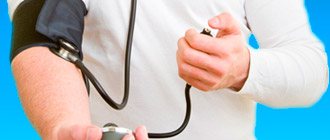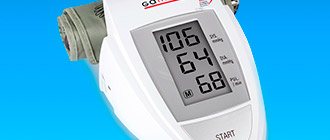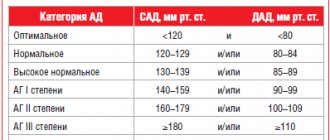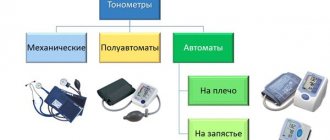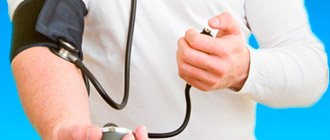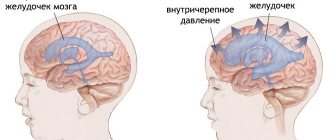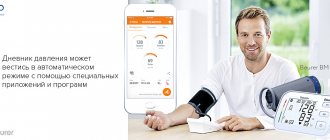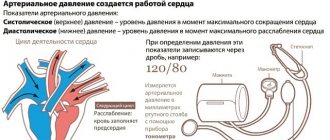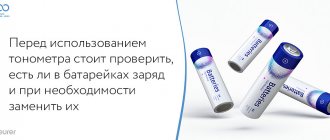Pressure indicators depend on the volume of blood that the heart can pump and the degree of resistance of the vessel walls. Its lowest level is in the right
atrium, and the highest is in the left ventricle. The upper limit is determined by the blood pressure ejected by the heart during contraction. This indicator is called systolic. The lower limit can be measured at the moment of complete relaxation of the heart. In this case we are talking about diastolic pressure.
At first, it is difficult to understand what the numbers mean when measuring blood pressure. To quickly adapt, you need to decipher them. Blood pressure is measured in millimeters of mercury. They got their name because of mercury tonometers. Previously, they were used to determine blood pressure, so such units of measurement were introduced. Despite the creation of new high-precision instruments, their value was left even for electronic versions.
In Russia and many other countries of the former USSR, blood pressure is measured in mmHg. Art. However, in some European countries the definition system is slightly different. To understand how their blood pressure is measured, you need to divide the result by 10. This is due to the fact that they usually take into account cm Hg. Art.
Pressure fluctuation
Research has shown that the pressure value is not constant. It is subject to vibrations that are called Mayer waves. They were discovered by the German Sigmund Mayer at the end of the 19th century. Based on the research results, the scientist concluded that in humans the oscillation frequency is approximately 0.1 Hz or 5-6 times per minute. Mayer waves are also characteristic of animals, such as rabbits and rats, but their rates are 3-4 times higher.
It was experimentally established that pressure fluctuations are constant and do not change depending on age, weight or gender. However, their amplitude may increase due to the activity of the sympathetic division of the autonomic nervous system. The only question that remains unresolved is the cause of the occurrence of Mayer waves, but research in this direction is underway.
Who's at risk
Monitoring blood pressure levels should begin at a young age for people at risk for this pathology.
Risk factors for hypertension:
- heredity;
- obesity;
- physical inactivity;
- frequent headache;
- exhaustion of the body due to chronic fatigue, prolonged nervous strain or neglect of proper rest;
- addiction to foods included in the list of “harmful” (fried, salted, smoked, stimulating the nervous system);
- bad habits (consumption of alcohol and nicotine leads to narrowing of the lumen of blood vessels and increased heart rate);
- chronic kidney disease;
- age over 55;
- uncontrolled treatment with drugs (especially NSAIDs and hormonal drugs);
- diabetes.
The more risk factors present in a person's life, the greater the likelihood of developing hypertension.
Indicators
In medical practice, 120/80 is considered to be the ideal blood pressure for people over 14 years of age. However, there are situations when the indicator differs slightly from the norm depending on individual characteristics. Some people do not feel any changes in their condition if the pressure is decreased or increased by 10-20 units. Such small deviations do not greatly affect health, but when the indicator exceeds 140/100 or falls below 100/80, then it is time to start treatment.
Depending on the indicators, pressure is divided into the following types:
- 50/35 - 89/59 - arterial hypotension;
- 90/60 - 129/84 - permissible limit;
- 130/85 - 139/89 - prehypertensive state;
- 140/90 - 210/120 and above - arterial hypertension.
Indicators ranging from 180/110 to 210/120 and above are equated to a hypertensive crisis. If it occurs, the patient must be urgently hospitalized to avoid consequences, for example, a heart attack or stroke.
Hypertensive crisis
A sharp sudden rise in blood pressure is one of the most common manifestations of arterial hypertension, this is a hypertensive crisis.
This condition can occur under the influence of stress, sudden changes in climate or weather conditions, or physical stress.
A hypertensive crisis is accompanied by nervous overexcitation or, conversely, lethargy, severe headache, nausea, and blurred vision.
The result of a crisis can be an acute cerebrovascular accident, myocardial infarction or other acute vascular disorder.
Indicators in children
Depending on the age of the person, his indicators may be different.
For babies under one year old, normal blood pressure is calculated using the formula 76 + 2*n. Instead of “n”, you need to substitute the child’s month. The lower pressure reading should remain at 2/3 of the upper one. For an adult child, the calculation is carried out using the same formula, but now instead of “n” the number of years is inserted, and 76 is changed to 90. For example, if the child is 5 years old, then:
90+2*5=100
We get the upper figure, the lower one is approximately 2/3, which means the final pressure is 100/66 mmHg. Art. Small differences in the final results between girls and boys are acceptable, but not more than 5-10 mm. rt. Art.
Definition
Pressure is measured using a tonometer, which can be mechanical or electronic. The second type of device is divided into automatic and semi-automatic. The advantage of an electronic tonometer is that some models can additionally determine the degree of arrhythmia and heart rate.
The Korotkoff method is used to measure blood pressure with a mechanical tonometer. Its essence is to supply air into the cuff using a bulb and listen to the pulse with a stethoscope. The first heartbeat represents the upper pressure reading, and the last beat represents the lower one.
Semi-automatic electronic blood pressure monitors can be used to measure blood pressure without a stethoscope. Usually, air is pumped into the cuff using a bulb until the beep sounds. Next, the device releases it, determining the pressure indicator. The final result is shown on the display.
Fully automatic devices do not require manual air pumping. They measure blood pressure after pressing a button on the screen. The process lasts approximately 30 seconds.
An innovation in the field of pressure measuring devices is an implant that is implanted into the pulmonary artery. It does not exceed the size of 1 coin and allows you to constantly monitor the pressure level and send a signal to the computer.
Regardless of the type of determination device, all results are displayed in mmHg. Art. The procedure should be carried out in the morning and evening for people using antihypertensive medications. During the day, measurements are taken only when necessary. To obtain more accurate results, pressure should be measured on both limbs.
Measurement errors
An important condition is not to touch the phonendoscope membrane and cuff with your hands during the measurement process. Pulse from holding fingers will distort the readings. The tissue between the skin and the cuff interferes with the membrane's receptivity.
You cannot deviate from the level of the heart in the position of the cuff; the numbers will turn out to be too high or too low. The same result will be achieved if the Velcro is fastened too loosely or too tightly, a tired state, a hunched back, or the patient moving and talking.
When using a mechanical tonometer, you should not choose to round the indicators to 0 and 5. Only the actual data shown is taken as truth.
The impact of extraneous factors on the final results
To obtain accurate indicators, you need to take into account many factors, namely:
- Time when blood pressure was measured.
- The psycho-emotional state of a person during the procedure.
- Use of hypertensive or antihypertensive medications.
- Abuse of bad habits (smoking, drinking alcohol and drugs).
- Drinking strong coffee or tea.
Some suspicious people are subject to the “white coat” syndrome. They are completely healthy and, if there are no medical personnel nearby, their blood pressure remains within the normal range. The situation changes dramatically if the measurement is taken by a doctor. The pressure jumps sharply, but usually not higher than 140 per 100 mmHg. Art.
A course of therapy for such people is usually not prescribed, since they do not have any pathological abnormalities. The only thing a specialist can do is talk. In the conversation, he will talk about the dangers of sudden surges in blood pressure, and also advise you to use sedatives and stop being nervous. In some cases, it is recommended to help a psychotherapist.
To accurately determine blood pressure, it is important to understand in what units it is measured. The historical facts described above can help with this. After familiarizing yourself with them, it will be much easier to take measurements, especially if you first study the permissible age limits.
What is the maximum blood pressure that can be withstood?
Any deviation of blood pressure from the norm can result in significant complications
It is important to know how much pressure a person can withstand. It is impossible to answer this question accurately
All people have certain characteristics of the body. They react differently to blood pressure deviations. Experts say that an increase of 25-30 units can already be regarded as a potential danger.
Hypertension can be diagnosed in a person whose blood pressure level exceeds 140/95. When blood pressure increases by 20 units, the patient experiences a whole range of unpleasant symptoms. The greatest danger is posed by a spontaneous and rapid increase in blood pressure, but small changes are usually short-lived.
Headache and high blood pressure are the main symptoms of hypertension
Experts note that it is rare to encounter patients whose upper blood pressure levels have reached 300 units. Not every person can withstand this level. Usually, at such rates, death occurs.
Experts say that the maximum blood pressure that a person can withstand is 260/140. At higher rates, many patients die or have irreversible consequences. This condition may lead to:
- heart failure;
- ischemic stroke;
- apoplexy.
To prevent irreversible consequences, you need to call a doctor as soon as possible when the first symptoms of increased blood pressure appear.
Blood pressure levels depend on many different factors. Experts recommend taking preventive measures to prevent its increase. To do this you need:
- take walks in the fresh air every day;
- give preference to moderate physical activity;
- completely change your diet and give preference to healthy foods;
- completely give up bad habits;
- avoid stressful situations;
- get as much rest as possible;
- get rid of excess weight;
- observe the drinking regime.
Follow simple rules to prevent hypertension
Nutrition has a significant impact on blood pressure and the cardiovascular system in general. Often, it is due to an incorrect diet that deviations occur. Experts recommend avoiding the use of:
- excessive amounts of salt (you can consume no more than 3 grams per day);
- instant food products;
- drinks with gas (it is better to give preference to homemade juices and fruit drinks);
- fatty meats and some dairy products;
- alcohol-containing drinks, since almost all alcohol leads to a rapid increase in blood pressure;
- seasonings, as they often contain excessive amounts of salt and harmful additives;
- mayonnaise - such a sauce causes an increase in cholesterol in the blood (this contributes to the formation of cholesterol plaques, which always lead to an increase in blood pressure).
It is also recommended to maintain a drinking regime. Every day you need to drink at least 2.5 liters of clean water.
Lack of water can cause high blood pressure
To treat hypertension, it is customary for a patient to be prescribed several medications, since combination therapy is most effective.
In some cases, treatment must be carried out continuously, especially if the patient has an advanced stage of arterial hypertension.
Most often, patients are prescribed the following medications:
All medications can only be prescribed by a doctor. The doctor selects the drug based on individual characteristics. Self-medication is prohibited, since a drug that has a positive effect on one patient may harm another patient. In some cases, side effects may occur after taking the medication. In this case, you will need to consult your doctor.
You can learn more about the causes of increased blood pressure and the appearance of hypertension from the video:
